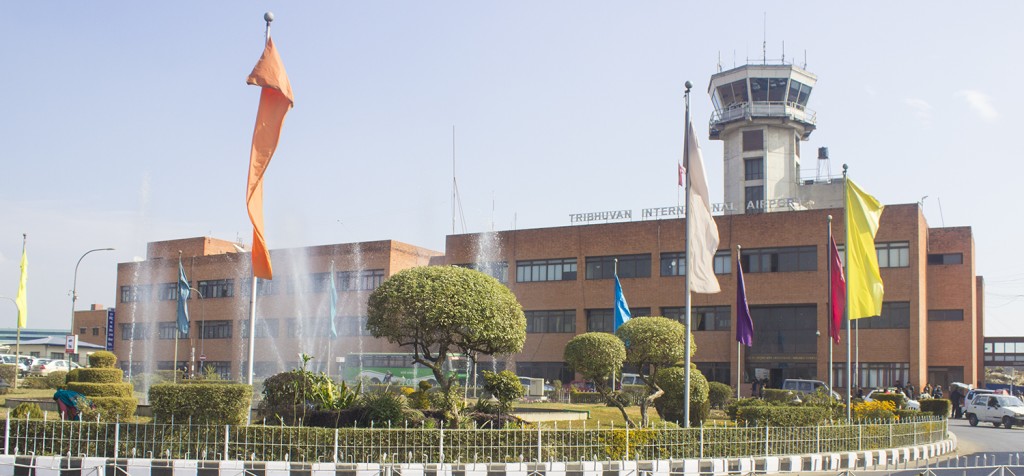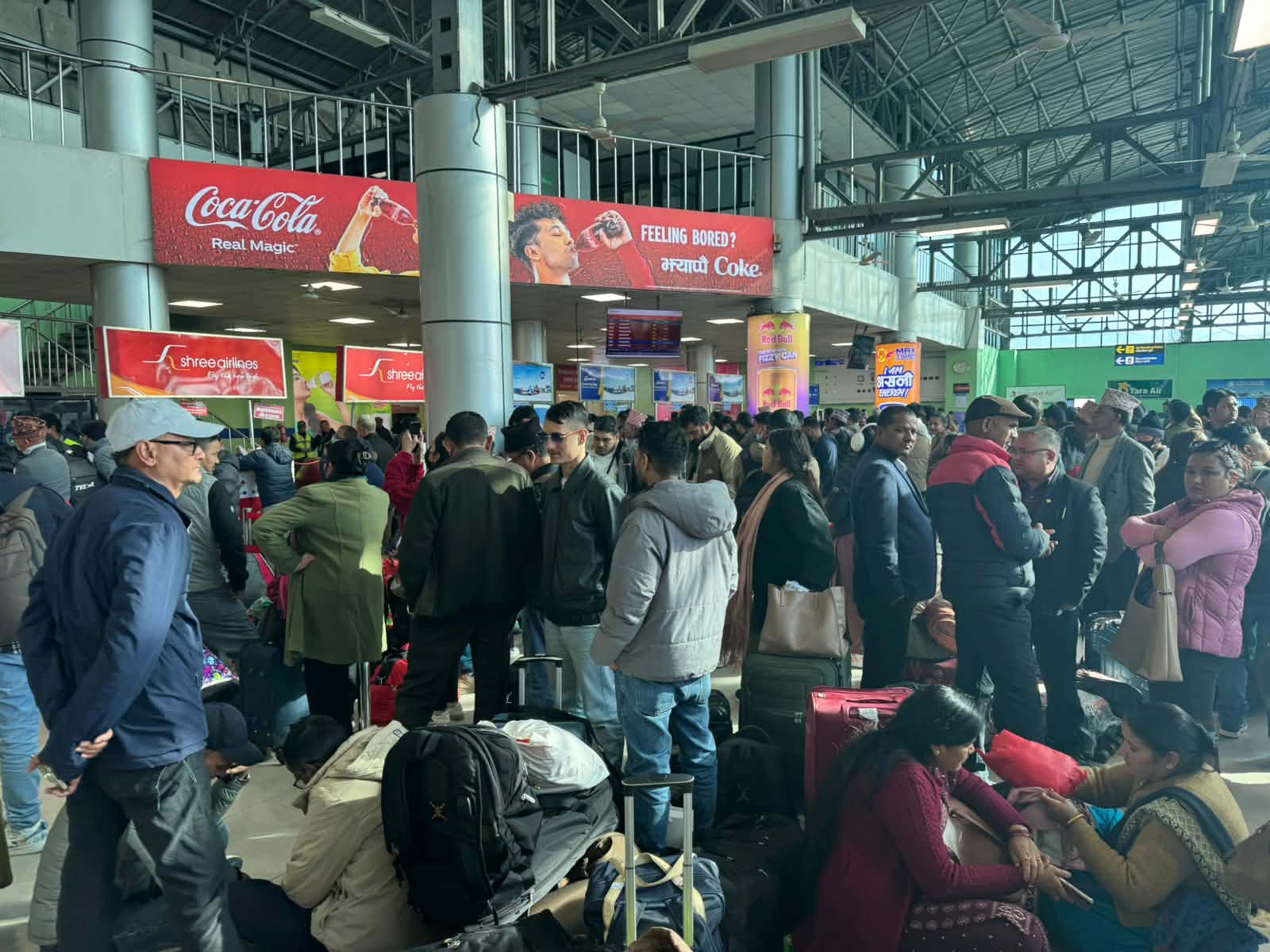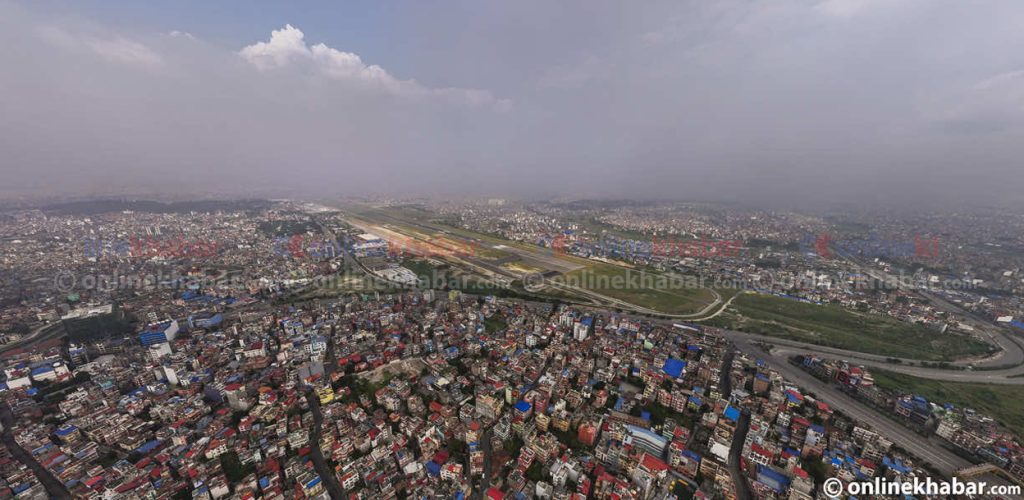The Civil Aviation Authority of Nepal (CAAN) is giving Tribhuvan International Airport (TIA) a major facelift.
In the 66 years long aviation history of the country, Nepal has seen manyfold growth in the total number of flights flying in and out of TIA but the ageing infrastructure of the sole international airport of the country has barely been able to keep up.
As part of the phased infrastructure development project of TIA, CAAN has been working on the improvement of the airport’s infrastructure, services and aesthetics under three different phases. The single runway airport is currently handling 40 international flights daily along with domestic flights which amount to nearly four times of that of the total number of international flights daily.

Among the improvements undergoing currently, the feasibility of installing a 400 ton central air conditioning system is under study. A lift in the air traffic control tower has recently been installed and a tender for the installation of four escalators has been called. The tender for two conveyer belts for baggage handling has already received applications. Two sets of baggage lifting kits is now operational after being installed recently.
For its electrification, the airport currently has a dedicated feed, a city supply feed and two sets of generators (640 kVA AND 600 kVA ). Seeing how these supply will be inadequate in the future, CAAN has purchased a generator of 1000 kVA.
Under the immediate phase, the beautification of the airport will be done. Old infrastructures will be given a facelift and the stretch that connects TIA with Ring Road via the golden gate at the airport’s entrance will also be given a facelift. Parking for taxis will be systematised and WiFi will be available at most areas of the airport. A soothing tune will be heard inside the passenger terminals and old air conditioning systems will be replaced with newer ones in the domestic and international passenger terminals. Special consideration will be taken for water management and hygiene at TIA’s washrooms.
A multistoried parking facility for vehicles coming to TIA will be constructed under CAAN’s mid term plans. The current WiFi system will be improved for better coverage and speed within three months. A 400 tons central air conditioning system will be installed within six months.
Apart from these immediate improvements, CAAN has also devised a long term project to be completed by the year 2028 with the loan granted by Asian Development Bank (ADB). The total cost of the entire project is estimated at $ 6 million.
Under the long term plan, a new 90,000 sq. ft. international terminal will be built at the north eastern part of the airport. The new terminal is expected to put an end to most problems related to congestion in the current terminal. The current international terminal will be used as the domestic terminal and the current domestic terminal will be used for mountain flights and other purposes. The parking capacity of jetliners will also be increased to 20 from the current 9, whereas for smallers planes plying the domestic routes, the parking capacity will be increased to 42.
Given the immense potential for tourism in the country, airliners from all over the world have been eyeing on starting their services to Kathmandu. Those airliners already serving the route are looking to increase their flight frequency. But TIA and CAAN have not been able to grant permission for new flights given their inability to handle the current flow of air traffic. The increase in traffic has not only exhausted the sole runway of the airport but has also degraded the services in the terminals and the airport’s overall ground handling.
CAAN has signed the ASA (Air Services Agreement) with 38 countries worldwide and a total of 57,656 seats are available to passengers out of which only 39% is occupied by travelers. The poor ground handling and services of the airport may account for the decrease in occupancy.
The airport had a total handling capacity 1,340 passenger every peak hour in 2002. A detailed studied of the airport’s infrastructure was done by ADB in 2009 after which an expansion to increase the total handling capacity was started in 2012. The expansion will be completed by July, 2018 after which the airport will be able to handle a total of 2,046 passengers every peak hour. The new international terminal to be completed by 2028 will be able to handle a total of 3,600 passengers every peak hour.
























